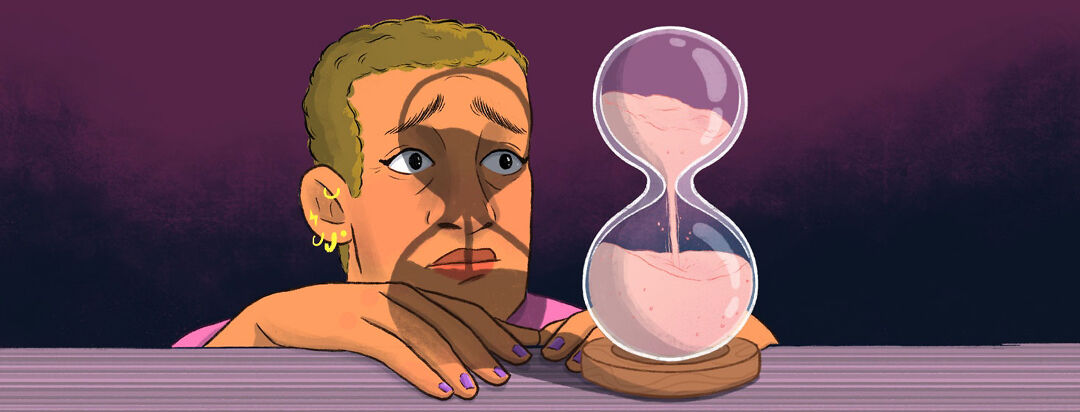Sand Through an Hourglass
I was sitting in the oncology clinic last week and on the TV I heard, “Like sand through an hourglass these are the times of our lives;” the familiar intro of the long running soap opera “Days of Our Lives.” It made me think about time and how quickly it passes.
When we’re young, the sand is thick and it moves through the hourglass at a sluggish pace. There’s the excruciating wait to hit those life milestones; your first solo drive when you get your driver’s license or turning 21 so you can have your first legal beer. However, as you age, every year it seems like the grains metaphorically filter through that hourglass even more swiftly than the year previous.
This or That
Have you entered our Blood Cancer Awareness Month Giveaway yet?
The speed appears to increase exponentially when you are diagnosed with an incurable, chronic, progressive cancer. If you look close enough you can almost see the top of the hourglass empty…time is running out in your hourglass.
Planning to live to 100
When I was first diagnosed with polycythemia vera (PV), my hematologist pulled out a chart and said according to this you will probably live around 17 more years. At the time, I was in my mid-50s so he added, you’ll likely reach your late 70s which is pretty close to a normal lifespan.
Normal? To who? I was planning to live to 100! I had lots of questions following that appointment…did he mean 17 years from today? Or from my diagnosis? Or from when I likely developed PV? I personally though it was ludicrous to determine your longevity from a statistical analysis. Everyone’s health is different and there are many extenuating circumstances that could alter your time on this earth.
Hourglasses were a means to tell time in ancient days. Although they aren’t commonly used today, they can actually still be purchased at Amazon.com. The only time I recall using an hourglass was playing board games.
I recently learned a new word - ephemerality - which means a state or quality lasting for a short time. I equate this to life.1 No one really knows how long they really have on this earth, as life is fleeting. Having cancer tends to make you think of your mortality.
How long do I have?
I know with a PV diagnosis, my chances of a blood clot, a heart attack or stroke are significantly greater. I’m also aware that there is an approximate 10% chance that my PV will transform into an even more critical myeloproliferative neoplasm (MPN) called myelofibrosis and a slightly smaller chance it will morph into acute myeloid leukemia. On top of the PV, I also have had breast cancer with a CHEK2 mutation. This means statistically I have about a 30% chance of the cancer returning or metastasizing. It also increases my risk of other types of cancer; colon, kidney and thyroid.2
It’s easy to stress out with all this information, and I’d be lying if I said I haven’t in the past. However, instead of continually dwelling on it, I choose to move forward and continue to live each day to the fullest. I am doing all I can to slow the sieving sand in my hourglass so I can live to 100!

Join the conversation